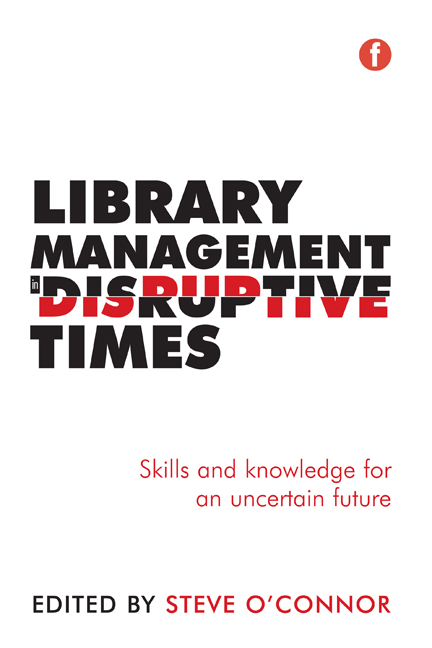Book contents
- Frontmatter
- Contents
- Contributors
- Introduction
- 1 Leading change: knowledge for success
- 2 Management fads and fashions and their impact on the LIS community
- 3 The Five Rules of Engagement for librarians: aux Ranganathan's laws of library science
- 4 Library management, disruption and consortia: an Australian example
- 5 No regrets; just lessons: economic crisis is changing our life and the management of libraries
- 6 Introducing agile principles and management to a library organization
- 7 The role of professional associations in changing times
- 8 And the walls came tumbling down ... The library profession confronts all-invasive new managerialism
- 9 What is behind the meaning of disruption? Or, thinking of management strategies from the outside
- Index
6 - Introducing agile principles and management to a library organization
Published online by Cambridge University Press: 08 June 2018
- Frontmatter
- Contents
- Contributors
- Introduction
- 1 Leading change: knowledge for success
- 2 Management fads and fashions and their impact on the LIS community
- 3 The Five Rules of Engagement for librarians: aux Ranganathan's laws of library science
- 4 Library management, disruption and consortia: an Australian example
- 5 No regrets; just lessons: economic crisis is changing our life and the management of libraries
- 6 Introducing agile principles and management to a library organization
- 7 The role of professional associations in changing times
- 8 And the walls came tumbling down ... The library profession confronts all-invasive new managerialism
- 9 What is behind the meaning of disruption? Or, thinking of management strategies from the outside
- Index
Summary
Introduction
Change. The world is changing. This is not new. The human race has evolved and our societies continue to evolve and change over time, adapting to new circumstances, technologies and cultures at a rapid pace. The methods for dealing with that change in the 21st century are increasingly failing, as the people in our organizations are failing to connect their practice with the needs and vision of libraries for the future. The ways in which we operate and the structure of our work are holding back the development of libraries and the necessary change. Stephen Denning describes the need for change and how to make change happen in our emerging world:
It's about sparking change that engages people's hearts and minds. It's about change that draws on everyone's talents and creativity, not just the schemes of a few experts at the top.
Instead of articulating a top-down vision to be rolled out from above, crushing ‘obstacles’ in its path, it's about inviting people to dance with complexity. Instead of mining ‘human resources’, it's about minding the people. Instead of tending the vertical hierarchy, it's about stimulating the horizontal network. Instead of constructing firewalls to insulate the firm from its context, it's about engaging with the environment.
(Denning quoted in Appelo, 2012, vii)By introducing agile principles throughout our library organizations we are moving towards an organizational culture that can deal with change and engage and develop the services that our users love or didn't know they needed but love when they find them.
A new organization
In the spring of 2013 an organizational overhaul of Chalmers Library was announced. During the following year interviews with staff, engagement with other libraries and literature reviews commenced, leading to a new organizational structure with three departments and three crossfunctional teams focused on library operations and processes (Figure 6.1).
The Scholarly Communication department focuses on library services for storing, analysing, visualizing and communicating research inform ation. It also hosts a cross-functional team working with library instruction and the information literacy programme at Chalmers.
- Type
- Chapter
- Information
- Library Management in Disruptive TimesSkills and knowledge for an uncertain future, pp. 85 - 100Publisher: FacetPrint publication year: 2015
- 2
- Cited by



